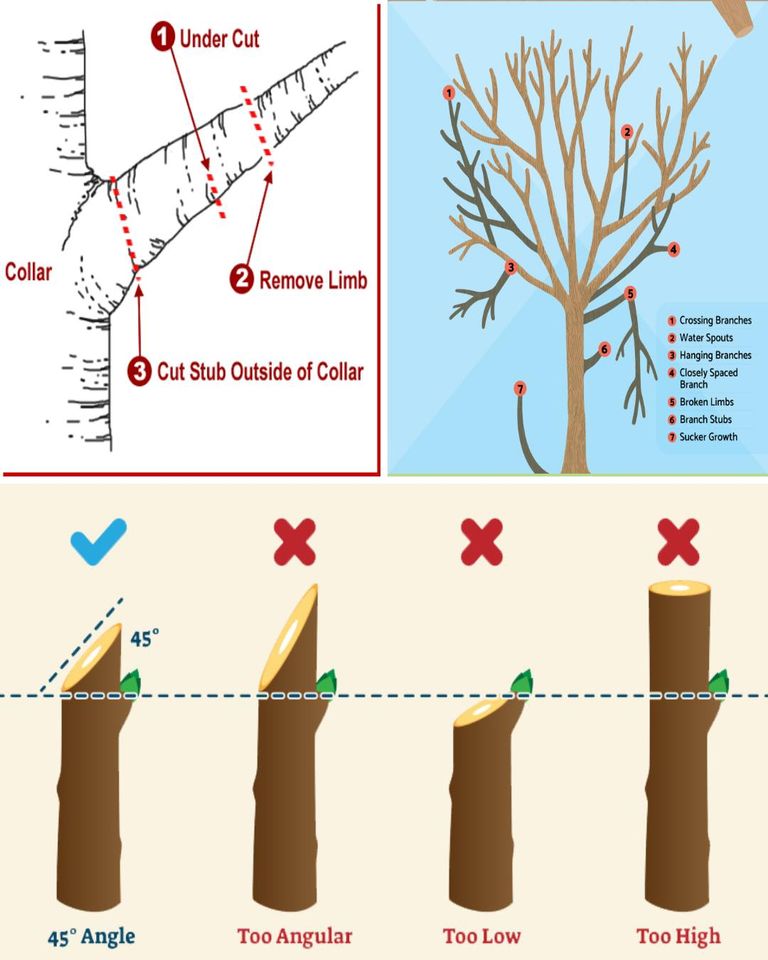How and when to Prune Trees and Shrubs
Pruning plays a crucial role in maintaining the health and structure of trees and shrubs, blending artistry with scientific understanding for effective results. Here’s a breakdown of how and when to prune, along with essential techniques for successful pruning.

Understanding Growth Buds
Apical Dominance: Growth primarily occurs from terminal buds, suppressing lateral bud growth. Different species exhibit varying degrees of apical dominance, affecting lateral shoot development.
Growth Patterns: Limb orientation influences apical dominance. Vertical limbs display strong dominance, while lateral branches at 45° to 60° angles show reduced dominance. Horizontal limbs lack dominance, often resulting in water sprouts.

Removing Heavy Branches
Cutting Technique: Begin with an undercut to prevent bark tearing when removing large branches.
Top Cut: Make a top cut outside the undercut to remove the branch cleanly.
Branch Collar Cut: Finalize the cut near the branch collar to promote optimal healing without damaging it.
General Pruning Guidelines
Timing: Prune during dormancy in winter or early spring. For flowering shrubs, prune after blooming to preserve next season’s buds.
Evergreens and Fruit Trees: Prune evergreens in early spring and fruit trees to enhance light penetration and fruit production.
Roses: Spring pruning involves cutting back to healthy wood above an outward-facing bud.

Pruning Techniques
Thinning: Remove entire shoots to maintain apical dominance and encourage growth at undisturbed shoot tips.
Water Sprouts and Suckers: Eliminate water sprouts and suckers to prevent energy depletion and guide growth.
Renewal Pruning: Promote air circulation and light penetration, particularly beneficial for older trees.
Crotches and Angles: Remove limbs with narrow crotches prone to weakness and damage.

Healing and Regrowth
Healing Process: Pruning initiates healing in the cambium layer. To expedite healing, cut close to the main branch without harming the bark ridge or branch collar.
Regrowth: Pruning stimulates regrowth near the cut, with more severe pruning resulting in greater regrowth to restore balance between the top and root system.
In essence, pruning trees and shrubs goes beyond mere cutting—it entails understanding plant biology and growth patterns. Proper pruning fosters healthy growth, enhances aesthetics, and safeguards against disease and damage.
